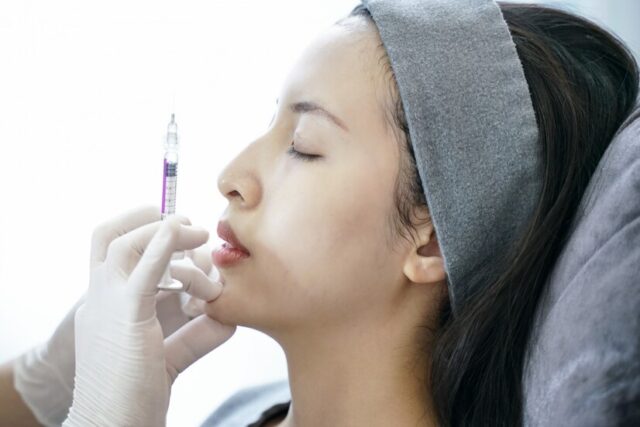Botox for Migraines: Can It Help Relieve Pain?

Botox for Migraines: Can It Help Relieve Pain?
Migraines can be debilitating, affecting millions worldwide and disrupting daily life. Amidst the array of treatments available, Botox has emerged as a potential solution. But can this cosmetic injectable truly offer relief from the throes of migraines? In recent years, Botox has garnered attention not only for its wrinkle-reducing properties but also for its effectiveness in managing chronic migraines. With its ability to temporarily paralyze muscles, Botox may help alleviate migraine symptoms by reducing muscle tension and inhibiting the release of pain-inducing chemicals. But how does it work, and what are the potential benefits and risks? In this blog, we delve into the science behind Botox for migraines and explore its role in alleviating this excruciating pain.
Understanding Chronic Migraines
Chronic migraines are more than just severe headaches; they’re complex neurological conditions characterized by recurrent, intense throbbing pain often accompanied by other symptoms such as nausea, sensitivity to light and sound, and visual disturbances. Unlike episodic migraines, which occur occasionally, chronic migraines persist for at least 15 days per month, with migraine attacks lasting for hours to days. The exact cause of chronic migraines remains elusive, but various factors, including genetics, environmental triggers, hormonal fluctuations, and neurotransmitter imbalances, are believed to contribute to their development.
For individuals living with chronic migraines, the condition can significantly impair their quality of life, affecting their ability to work, socialize, and engage in daily activities. Managing chronic migraines often requires a comprehensive approach that may include lifestyle modifications, stress management techniques, and pharmacological interventions.
The Rise of Botox as a Treatment Option
Botox, short for botulinum toxin, gained recognition initially as a cosmetic treatment for reducing facial wrinkles. However, its therapeutic potential extends beyond aesthetics, leading to its approval by regulatory agencies for various medical conditions, including chronic migraines. The use of Botox for migraine management arose from observations that patients receiving cosmetic Botox injections reported a reduction in migraine frequency and severity.
Subsequent clinical trials further validated its efficacy in chronic migraine prevention. This led to the approval of Botox as a prophylactic treatment for chronic migraines by regulatory authorities in many countries. The acceptance of Botox as a migraine therapy marks a significant milestone, providing patients and healthcare providers with a novel approach to managing this debilitating condition.
Mechanisms Behind Botox’s Effectiveness
Botox exerts its therapeutic effects on chronic migraines through several mechanisms. Primarily, it acts by blocking the release of neurotransmitters involved in pain transmission, such as acetylcholine and substance P, from nerve endings. By inhibiting the release of these neurotransmitters, Botox prevents the activation of pain pathways in the brain, thereby reducing the perception of migraine pain.
Additionally, Botox may exert its effects on migraine by modulating the activity of sensory nerves involved in the trigeminovascular system, which plays a crucial role in migraine pathophysiology. Moreover, Botox has been shown to possess anti-inflammatory properties, which may further contribute to its efficacy in migraine management by reducing neurogenic inflammation associated with migraine attacks. By targeting multiple pathways involved in migraine pathogenesis, Botox offers a comprehensive approach to migraine prevention, making it a valuable addition to the armamentarium of migraine treatments.
Targeting Muscle Tension: Botox’s Action
Muscle tension and tightness are common features of chronic migraines, contributing to the intensity and duration of migraine attacks. Botox’s action in migraine management extends beyond its neuromodulatory effects to include its ability to alleviate muscle tension. When injected into specific muscles, such as those in the forehead, temples, and neck, Botox inhibits muscle contraction by blocking the release of acetylcholine, a neurotransmitter responsible for muscle activation.
By inducing temporary muscle paralysis, Botox helps relieve the tension and stiffness associated with chronic migraines, thereby reducing migraine frequency, severity, and duration. Additionally, by relaxing the muscles involved in migraine pathogenesis, Botox may also prevent the triggering of migraine attacks in susceptible individuals. The targeting of muscle tension represents a unique mechanism of action of Botox in migraine management, underscoring its multifaceted therapeutic potential in alleviating migraine symptoms.
Breaking Down the Pain Cycle
Chronic migraines perpetuate a vicious cycle of pain, where recurrent migraine attacks lead to increased sensitivity to pain, amplifying the perception of pain during subsequent attacks. This phenomenon, known as central sensitization, involves changes in the central nervous system’s processing of pain signals, resulting in heightened pain sensitivity and decreased pain thresholds. By disrupting this pain cycle, Botox offers a promising approach to migraine management.
Through its neuromodulatory effects, Botox blocks the release of neurotransmitters involved in pain transmission, dampening the hyperexcitability of neurons within the central nervous system. Additionally, by reducing muscle tension and inhibiting neurogenic inflammation, Botox helps alleviate the peripheral and central sensitization processes underlying chronic migraines. By breaking down the pain cycle, Botox not only provides symptomatic relief but also addresses the underlying mechanisms driving migraine pathogenesis, offering a holistic approach to migraine management.
Clinical Evidence: Does Botox Deliver Relief?
Numerous clinical trials and real-world studies have investigated the efficacy and safety of Botox in the management of chronic migraines, yielding compelling evidence supporting its use as a prophylactic treatment. These studies have consistently demonstrated that Botox significantly reduces migraine frequency, severity, and duration, leading to improvements in patients’ quality of life.
One of the landmark trials, the PREEMPT (Phase III Research Evaluating Migraine Prophylaxis Therapy) clinical program, provided robust evidence supporting the efficacy and safety of Botox in chronic migraine prevention. In addition to reducing migraine days per month, Botox has been shown to decrease the use of acute migraine medications and improve functional disability associated with migraines. Furthermore, real-world studies have corroborated these findings, indicating that Botox is well-tolerated and effective in diverse patient populations. Despite variations in treatment response among individuals, Botox remains a valuable therapeutic option for chronic migraine prevention, offering sustained relief and improving patients’ overall well-being.
Exploring Botox Treatment Procedure
The Botox treatment procedure for chronic migraines typically involves a series of injections administered by a qualified healthcare provider, such as a neurologist or dermatologist, in an outpatient setting. Before the procedure, the healthcare provider will conduct a thorough evaluation to determine the appropriate injection sites and dosage based on the patient’s migraine symptoms and medical history. The most common injection sites for migraine treatment include the forehead, temples, scalp, and neck, targeting specific muscles and nerve pathways implicated in migraine pathogenesis.
During the procedure, the healthcare provider will use a fine needle to inject small amounts of Botox into the targeted muscles, following a predefined injection pattern. While the injections may cause mild discomfort or temporary stinging, they are generally well-tolerated by most patients and typically take only a few minutes to complete. Following the injections, patients can resume their normal activities immediately, with minimal downtime or restrictions.
Duration and Frequency: Managing Expectations

Managing expectations regarding the duration and frequency of Botox treatments is essential for patients considering this therapy for chronic migraines. While Botox can provide significant relief from migraine symptoms, its effects are not permanent, and subsequent injections are typically required to maintain optimal results. The duration of symptom relief following Botox treatment varies among individuals but generally ranges from three to six months before migraine symptoms begin to recur.
To achieve sustained benefits, patients may undergo a series of Botox injections administered at regular intervals, typically every three months. However, the exact frequency of treatments may vary depending on individual response to Botox and the severity of migraine symptoms. It’s important for patients to understand that Botox is not a one-time solution for chronic migraines but rather a long-term management strategy that requires ongoing commitment and adherence to treatment protocols.
Potential Side Effects and Risks
Like any medical procedure, Botox treatment for chronic migraines carries potential side effects and risks that patients should be aware of before undergoing treatment. While Botox injections are generally safe when administered by a qualified healthcare professional, some individuals may experience temporary side effects at the injection sites, such as pain, redness, swelling, or bruising. These side effects are usually mild and resolve spontaneously within a few days.
In rare cases, more serious side effects may occur, including muscle weakness or drooping, difficulty swallowing or speaking, blurred vision, or respiratory issues. These adverse reactions are typically transient and resolve without intervention but should be reported to the healthcare provider immediately if they occur.
Botox vs. Traditional Migraine Treatments
The comparison between Botox and traditional migraine treatments highlights the distinct advantages and limitations of each approach in managing chronic migraines. Traditional migraine treatments encompass a wide range of pharmacological interventions, including over-the-counter pain relievers, prescription medications, preventive drugs, and alternative therapies such as acupuncture or biofeedback. These treatments aim to alleviate migraine symptoms, reduce migraine frequency and severity, and improve patients’ quality of life.
In contrast, Botox offers a unique mechanism of action in migraine management by targeting specific muscle groups and nerve pathways involved in migraine pathogenesis. Unlike traditional medications that require daily or periodic dosing, Botox is administered via injections every few months and provides sustained relief from migraine symptoms over an extended period.
In Conclusion, the exploration of Botox for migraines reveals a promising avenue in the realm of chronic migraine management. From understanding its mechanisms to navigating treatment procedures and considering patient experiences, Botox offers hope for relief from the debilitating grip of migraines. At American Laser Med Spa, we’re dedicated to transforming lives by making people feel young, beautiful, and confident, while building a supportive community. If you’re ready to take the next step towards migraine relief, contact us today at 915-760-5123 or email us at Elpaso@americanlaser-medspa.com. Your journey to a life with fewer migraines begins here.






